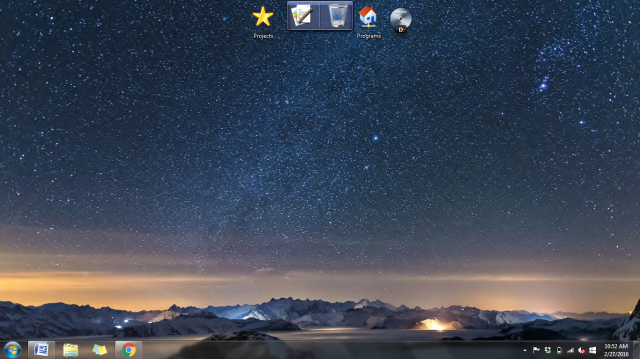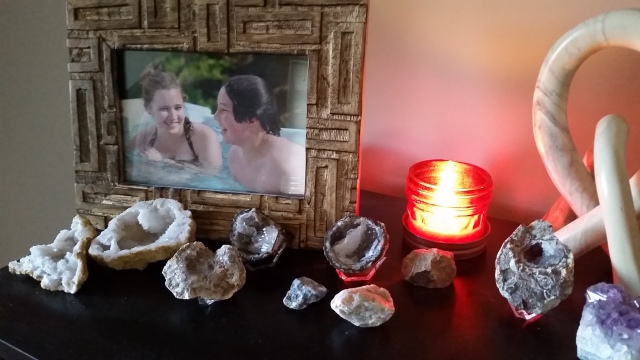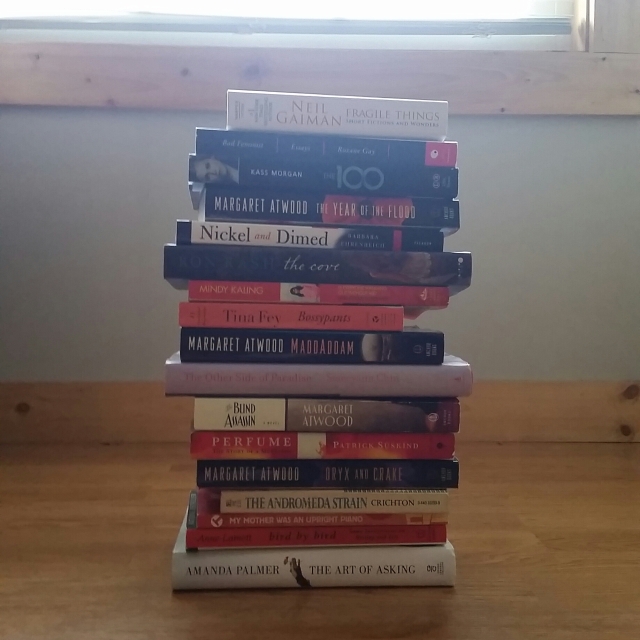I think there comes a time in your life as a minimalist that you run out of things to do first, and finally (probably), you tackle your sentimental clutter. I’ve said before that keeping photographs was a weakness for me, and that was no underestimation.

Before
When my father died, I was a kid and I inherited a pretty hefty collection of pictures that he had printed out all throughout my childhood, and to him, almost every day was a special occasion that needed to be commemorated in print. To get a little heavy here, for a second, I think he always feared the day when the two of us no longer lived together.
Among the collection of things that I found when I looked into the box after his death, I found records of commendations that I received in elementary school and medals that I got from reading programs, clothing that I must have worn when I was the size of a potato, and every terrific kid bumper sticker that I had been given in school. My dad’s hoarding was the beginning of sentimental hoarding for me.
I started out with all that, and in his honor and memory, I added to the group of things every time something of note happened. All of my birthday cards, papers that I had done exceptionally well on, and more photographs were all stuffed into the box until I graduated from college and then needed a total of five plastic containers to hold it all. I have photos.
A few weeks ago, feeling like I had run out of things to declutter, I finally took it upon myself to clean it out. I decided that I wanted to take my sentimental clutter from five containers to three. It’s not a big goal, but I met it. It took hours and was aided by a drink or two. I know that people believe that containing their closets is the hardest part of minimalism, but for me, it was getting rid of a pair of binoculars.
You know, the saying is: You don’t know what you got ‘til it’s gone.
And that is the anti-mantra of the lifestyle that I’ve been undertaking in the past month, but I went through the day’s task with a practicality that it has always been easy for me to adopt. My father had owned one of the worst pairs of binoculars I had ever seen, and there was absolutely no reason for me to keep them. I couldn’t even remember a single time he used them. They sat in one container for years at a time, completely forgotten, and so they needed to go.
I put them into the donation pile and hauled them away a couple of days later to the local Goodwill.
However, immediately after we dropped them off, we needed to shop for jeans and so the two of us, Tom and I, went into the store-section and there, at the glass top table where they keep their unclassifiable objects, my father’s binoculars were sitting, having already been processed in the amount of time that it took Tom to find a pair of khakis. They were being sold for nine dollars.
I thought about buying them back. It was a very strong urge. After all, they hadn’t been too expensive, and I had already met my decluttering goal.
It must have been divine intervention that kept me from taking out my wallet.
Honestly, it sounds a lot more like a cautionary tale than it should. I really had been upset at the time. It was the duty of Goodwill to take what I no longer needed, but seeing them with a price tag was sacrilegious.
At the end of the story, I got home, and I waited a few days, and then I wrote a blog all about the experience. What I want people to take away from this blog is that owning my father’s things didn’t keep him from being dead. He is still not coming back, and as nice as those binoculars were on a sentimental level, they didn’t serve me anymore. They don’t serve me more than the photographs of him do or the real memories that I have of him.
I knew the binoculars before I gave them away, and I know them after, but I don’t need them, and now they will belong to someone who will use them far better than I ever did.

After: the utility closet still needs culling, but it certainly is an improvement.




